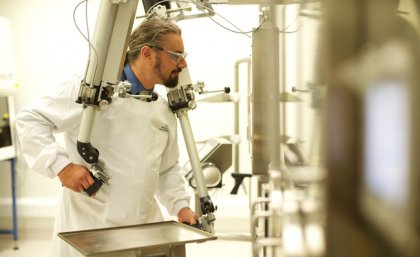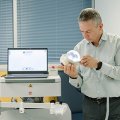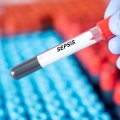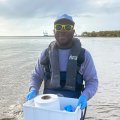
The University of Queensland’s Centre for Advanced Imaging has received a $2.5 million grant from the Australian Cancer Research Foundation to harness the power of molecular imaging to detect, characterise and monitor cancer.
The funding will allow the establishment of the ACRF Facility for Molecular Imaging Agents in Cancer within the CAI and the purchase of a PET-CT scanner to image large animals and humans.
The facility and equipment will help to streamline the discovery of new cancer drugs through the power of PET microdosing — examining the effects of tiny doses of drugs at a cellular level.
UQ Vice-Chancellor and President Professor Peter Høj said the foundation was one of UQ’s most consistent, reliable non-government partners for cancer research infrastructure.
“Cancer research and patient care sourced from Queensland and UQ in particular would have far less impact and reach were it not for the Australian Cancer Research Foundation,” Professor Høj said.
“With this latest grant, the contributions that ACRF has made to UQ in the past 15 years equate to almost $16.5 million.
“This is funding that has enabled great researchers like those at the Centre for Advanced Imaging to work with next generation equipment, enabling a new paradigm for cancer drug development.
“The ACRF is a great friend to UQ and more importantly, a friend that cancer patients of today and the future can count on.”
ACRF chairman Tom Dery said “Researchers in Australia are among the best in the world and we’re delighted to be supporting the cutting-edge work of the team at UQ in the area of tumour image analysis and treatment development.
“Research and innovation are our best means of ending cancer.”
Centre for Advanced Imaging Director Professor David Reutens said companion animals would also benefit from the ACRF Facility for Molecular Imaging Agents in Cancer.
“This grant will allow us to establish the first program in Australia in Comparative Oncology, where studies of spontaneous cancer in companion animals will ultimately facilitate new cancer treatments for humans,” Professor Reutens said.
“Broader awareness and understanding of these naturally occurring cancer models will provide valuable biological data. Aided by unique interactions between veterinarians and the cancer research community, the Facility’s new scanner will accelerate the development of new agents for cancer diagnosis and treatment.
“The ACRF Facility for Molecular Imaging Agents in Cancer will allow us to bring together cancer researchers from UQ and collaborating institutes with veterinary oncologists from UQ’s School of Veterinary Science and the Brisbane Veterinary Specialist Centre, maximising the benefit from the PET-CT scanner.”
Media: Centre for Advanced Imaging, Rebecca Osborne, +61 7 3365 4235, rebecca.osborne@cai.uq.edu.au.
About the Centre for Advanced Imaging: The Centre was created in 2009 as a strategic initiative of The University of Queensland. It reflects the growing role of imaging in cutting-edge biotechnology and biomedical research at UQ. Bringing together the skills of a critical mass of researchers and state-of-the-art research imaging instruments, it is the only facility of its type in Australia, and one of only a handful of such centres in the world.












